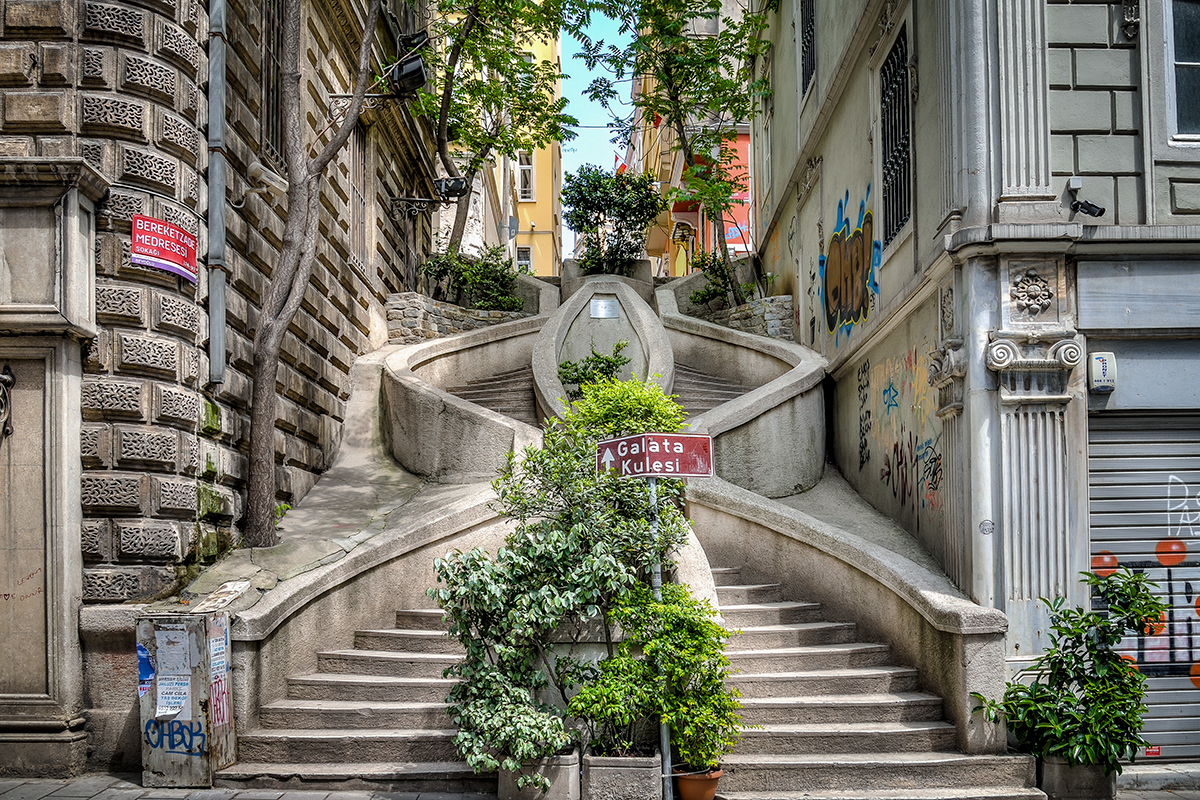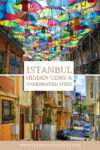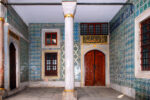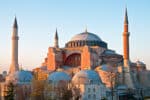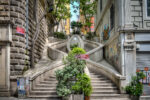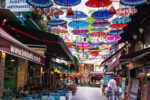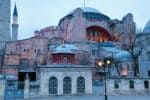As a city shaped by two powerful empires: Roman (Byzantine) and Ottoman, it’s not surprising that, in Istanbul, hidden gems are as plentiful as the city’s iconic monuments, the likes of Hagia Sofia, Blue Mosque, and Topkapi Palace & Harem.
You can easily spend hours wandering the backstreets of Istanbul, where ancient structures are matter-of-factly integrated into the modern city. Every corner you turn, you discover more hidden gems, many of which are centuries old.
But if you prefer more purposeful explorations, here are some of the most spectacular and charming hidden gems of Istanbul. Some of them are more hidden than others.
Umbrella Street, Karakoy
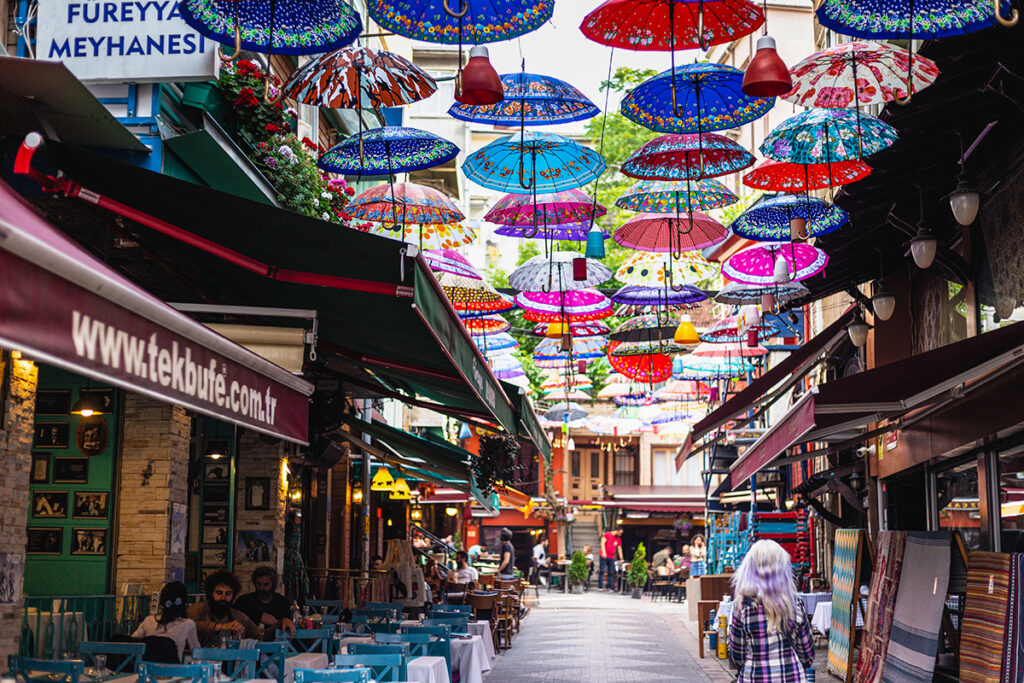
Just a 10-minute stroll from Galata Tower, you find Karakoy neighbourhood’s most lovely street – Hoca Tahsin Street, colloquially known as Umbrella Street (one of several umbrella streets in Istanbul). This little street doubles up as an open-air gallery with vibrant street art and a canopy of multicoloured umbrellas strung across the street. One end of the street is taken up by various shops, and the other end has some lovely cafes.
If you climbed the steep street to Galata Tower, Hoca Tahsin is the perfect street for a coffee break. Even if you haven’t climbed any hills, this is a very scenic spot to people-watch and soak up the atmosphere of modern-day Istanbul.
Camondo House Stairway
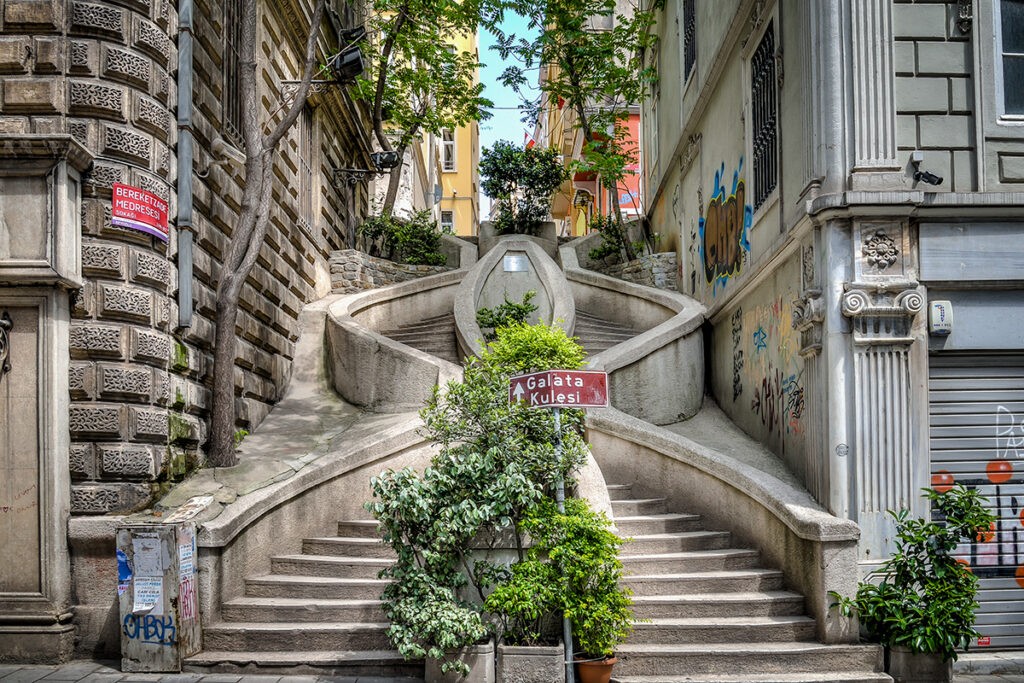
Camondo Steps, also in Karakoy, are not your typical hidden gem. They may not feature in tourist brochures, but they are very popular with Instagrammers. Designed in hexagonal shape in a fusion of the Neo-Baroque and early Art Nouveau styles, the steps are like nothing else in Istanbul.
Yet while Istanbul is mostly associated with Byzantine and Ottoman architectural styles, in the late 19th century, the Art Nouveau movement flourished in Istanbul and left striking traces in the city.
Camondo steps were designed in the 1870s by Abraham Salomon Camondo, an influential Jewish banker, to provide a shortcut between Bankalar Caddesi and Banker Sokak – two banking streets in 19th-century Istanbul.
Balat and the Iron Church
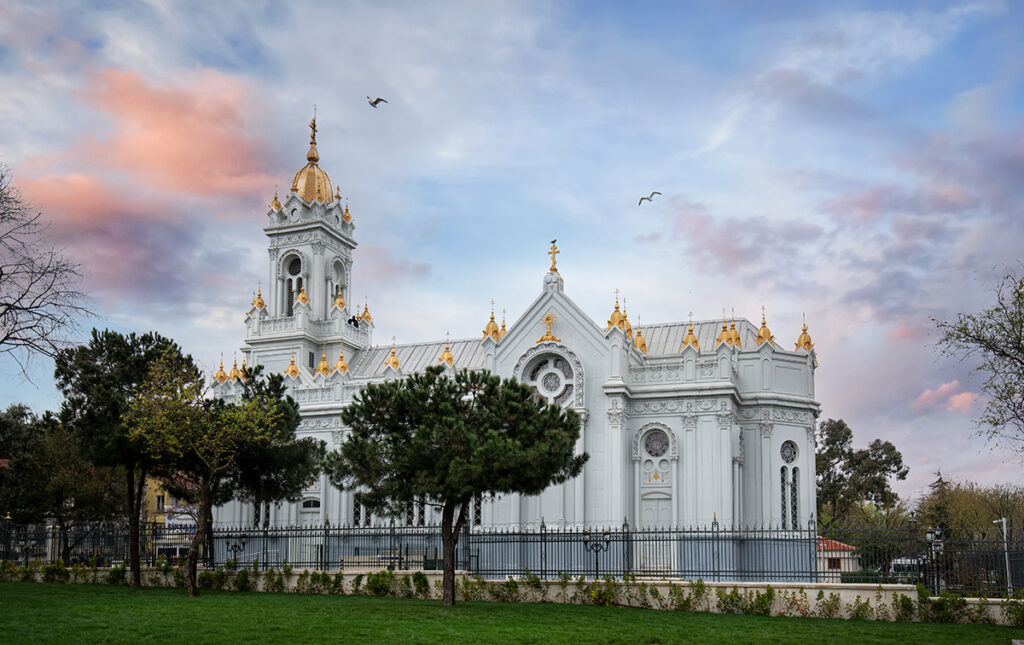
Perhaps one of Istanbul’s most underrated monuments is the Bulgarian St Stephen church in Balat. The neighbourhood of Balat is mostly known for its charming backstreets lined with colourful houses. Yet Balat is also home to the world’s last remaining iron church. That’s right, the Bulgarian St Stephen church was built entirely from cast iron – an incredible 500 tons of it.
The church has been recently restored and lost some of its old charm, but it remains a very unique structure – the last of its kind in the world.
Chora Church or Kariye Museum
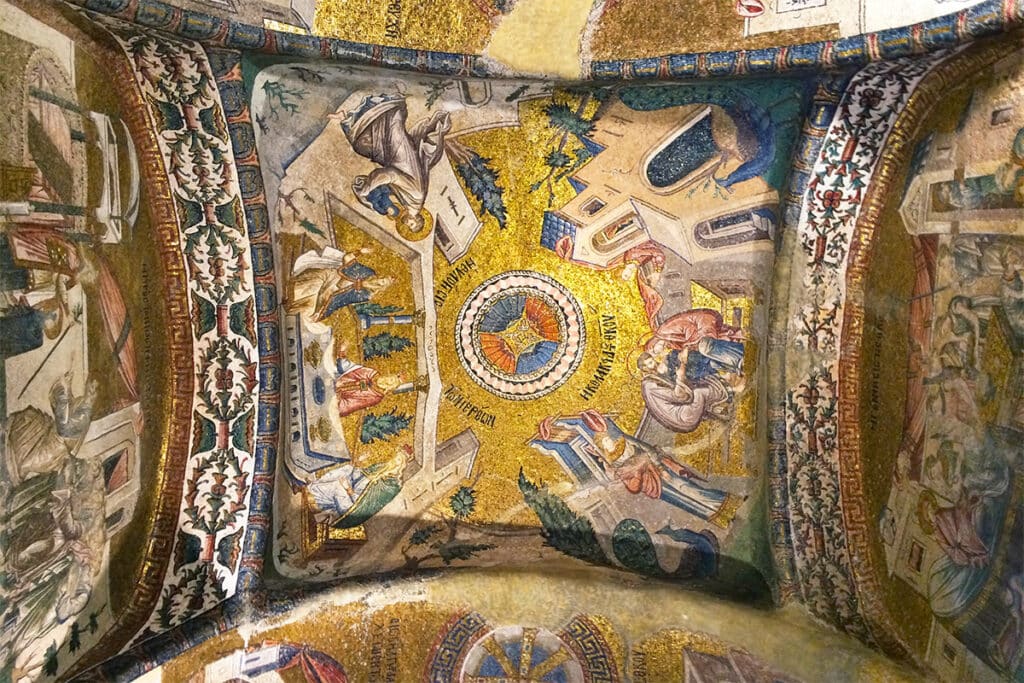
Located in the Edirnekapi neighbourhood, Chora Church is a beautiful Byzantine church that contains some of the most exquisite mosaics and frescoes that survive from the days of the Byzantine or Eastern Roman Empire. It is located further from the city centre and takes a little more effort to reach, but it is definitely worth the trouble.
It was built in an effort to restore the glory of Constantinople after the city was sacked by the Latin soldiers of the Fourth Crusade in 1204. And it appears that no effort or expense had been spared in the creation of this masterpiece. The mosaics in Chora are jaw-droppingly beautiful. And they are old.
And this beauty is all the more remarkable for the surprise you feel from finding this gem in such an out-of-the-way location.
Theodocian Walls
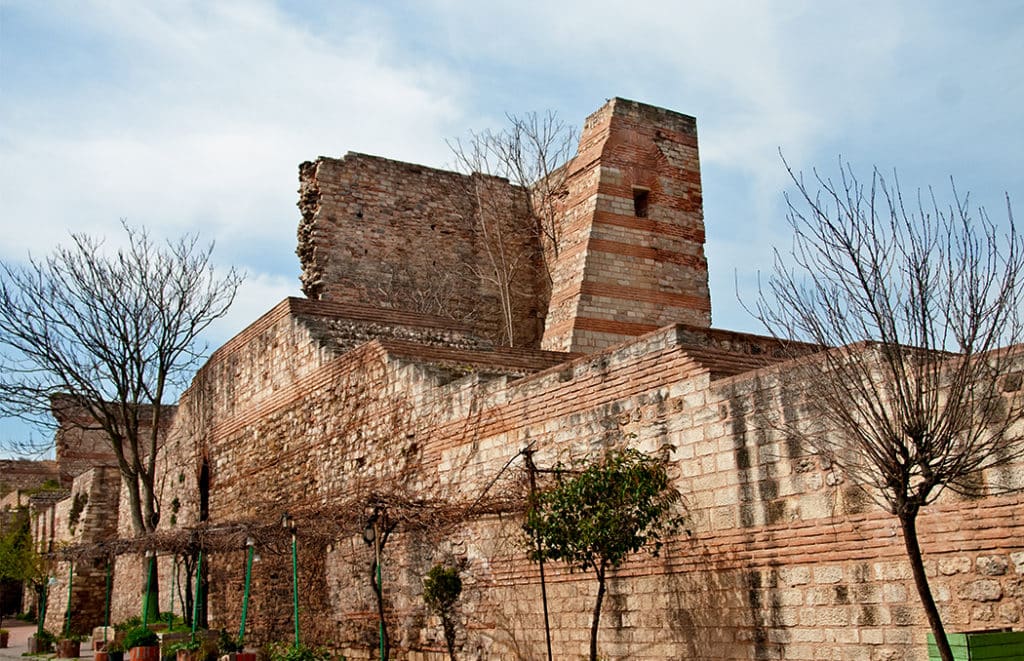
Near Chora Church, you find another monumental reminder of the great city of Constantinople – a well-preserved section of the Theodocian Wall. For centuries, Constantinople was a walled city with multiple gates built into its defence walls.
In fact, you walk through one of these gates – Edirnekapi Gate to get to Chora Church. The nearby section of the famous double walls erected during the reign of Emperor Theodosius II (402–450) is well worth the visit
Zeyrek Camii or Pantokrator Monastery
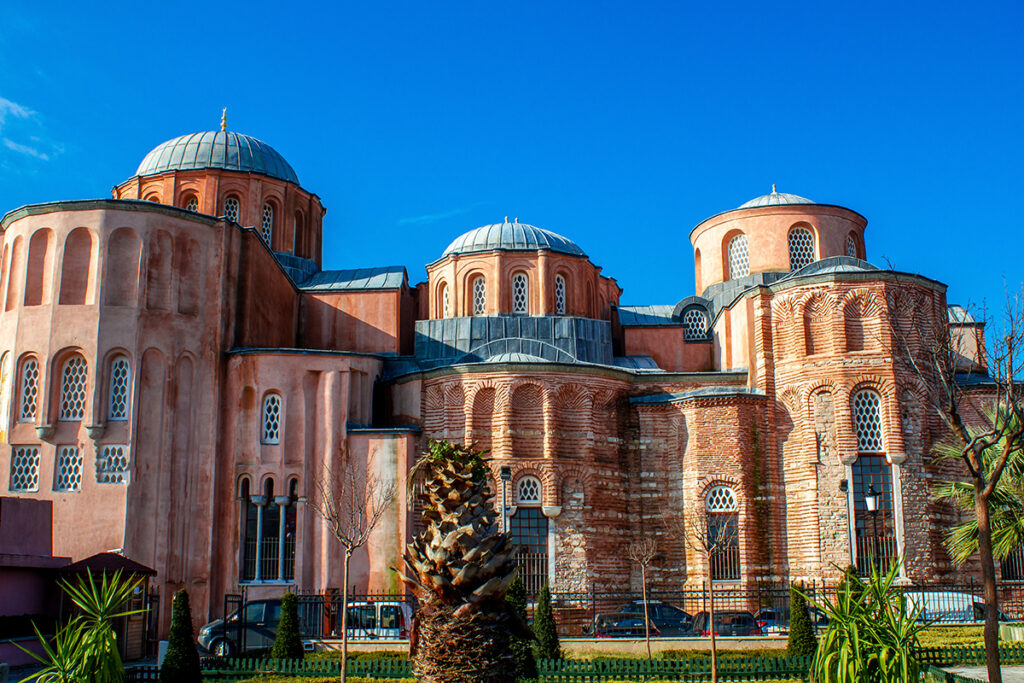
Like many other Ottoman mosques in Istanbul, Zeyrek Camii was initially built as a church. Or rather, two churches next to each other, both built in the 12th century. Known as Pantokrator Monastery in Byzantine times, it was the second-largest religious building in the empire after Hagia Sofia.
Surprisingly, even though the monastery is a UNESCO world heritage site, it is often overlooked by visitors, overshadowed by the city’s more iconic sites.
Unlike Hagia Sophia, with its minarets and surrounding Ottoman structures, Zeyrek Mosque looks distinctly Christian on the outside. The striking contrast between the Christian exterior and Muslim interior of the mosque makes Zeyrek Camii creates the same unexpected effect as Cordoba‘s Mosque-Cathedral in Spain.
Theodosius Cistern
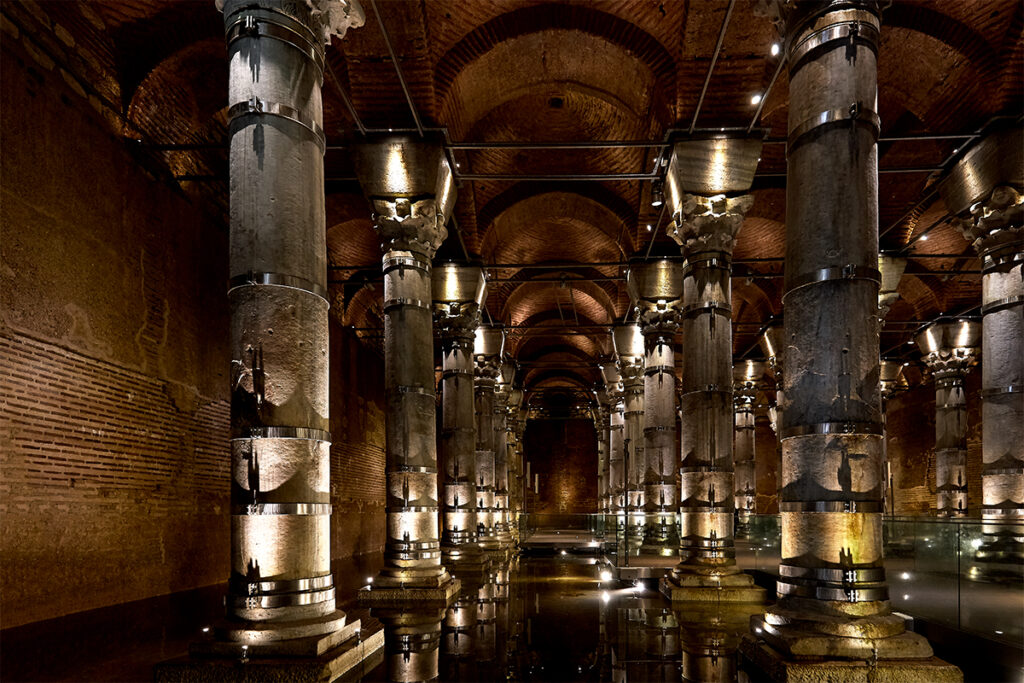
The Theodosius Cistern is one of several ancient cisterns of Constantinople, concealed beneath the streets of Istanbul. And while most visitors to Istanbul are familiar with the Basilica Cistern, the Theodosius Cistern only opened to the public in 2018, and it remains a bit of a hidden gem in Istanbul.
It was built It was built by Roman Emperor Theodosius II, the same Theodosius who built the Land Wall, and was used for storing water delivered to the city by the Valens Aqueduct. Theodosius cistern has the same mystical atmosphere as Basilica cistern, and it’s located just a 5-min stroll away. So if you enjoyed visiting Basilica cistern, don’t miss its Theodosian cousin.
The entrance to Theodosius cistern is located underneath a modernist building at Piyer Loti Caddesi No: 2/1 – another unexpected fusion of old and new in Istanbul.
Sea Walls of Constantinople and Akbiyik Camii
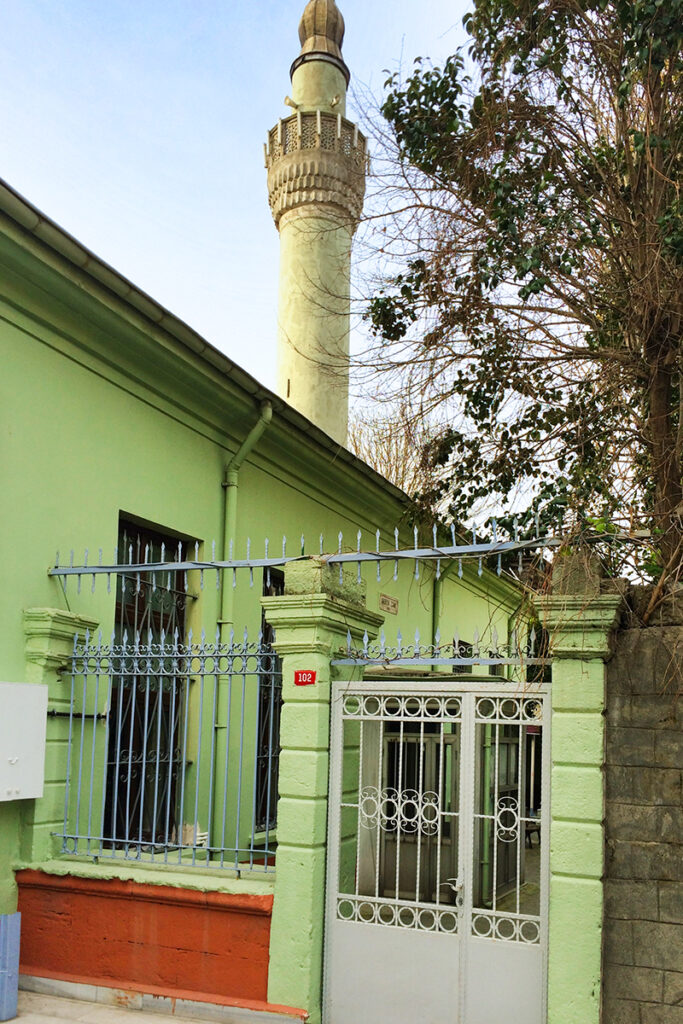
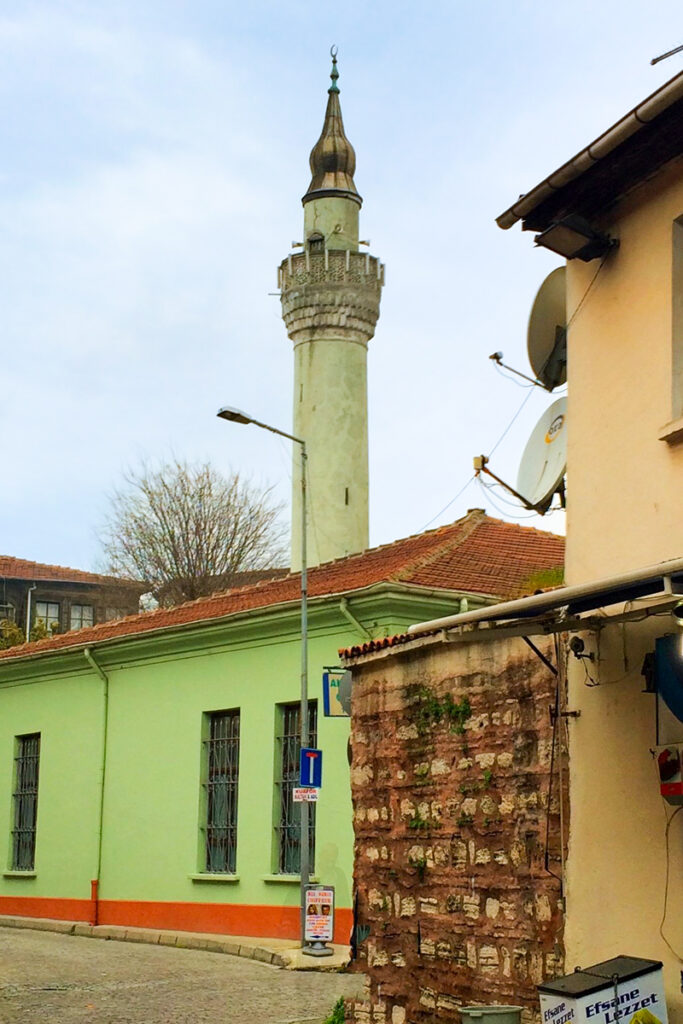
The back streets of Sultanahmet, surrounding the Theodosius Cistern, are filled with hidden gems. If you walk to the Bosphorus shore, you’ll find the ancient sea walls of Constantinople. They run along today’s Kennedy Avenue. Not as impressive as Theodosius’ Land Walls, Sea Walls are much older.
A couple of streets behind Blue Mosque, there is another hidden gem – Akbiyik Camii – one of the oldest mosques in Istanbul. Built in 1464, it is a small and simple structure with a single minaret painted in light green. It is a peaceful little mosque hidden away on a street corner between the Bosphorus and the centre of Sultanahmet. Amazingly it is still a functioning mosque.
View of Istanbul from Suleymaniye Mosque
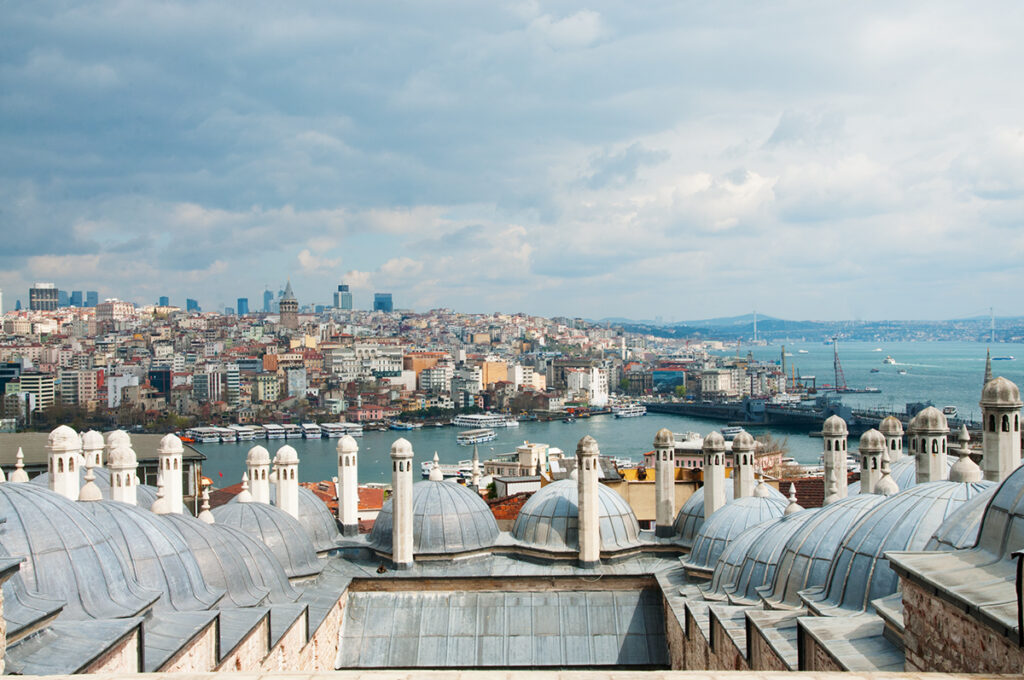
Suleymaniye mosque is not a hidden gem, although it is nowhere near as popular with tourists as the mosques in Sultanahmet. But the reason I include the mosque in this list of Istanbul hidden gems is the view of Istanbul and the Golden Horn from its courtyard.
Rising above the city on top of a big hill, Suleymaniye mosque commands a spectacular view. I’m fact, it is my favourite view in Istanbul.
Looking over the ornate rooftops of the mosque’s kitchen, the view takes in the Bosphorus, the Golden Horn and Galata Tower. So if you are looking for an iconic view of Istanbul, head to Suleymaniye mosque. And while you are there, wander the ancient streets around it – the true Istanbul hidden gems.
Rüstem Pasha Mosque
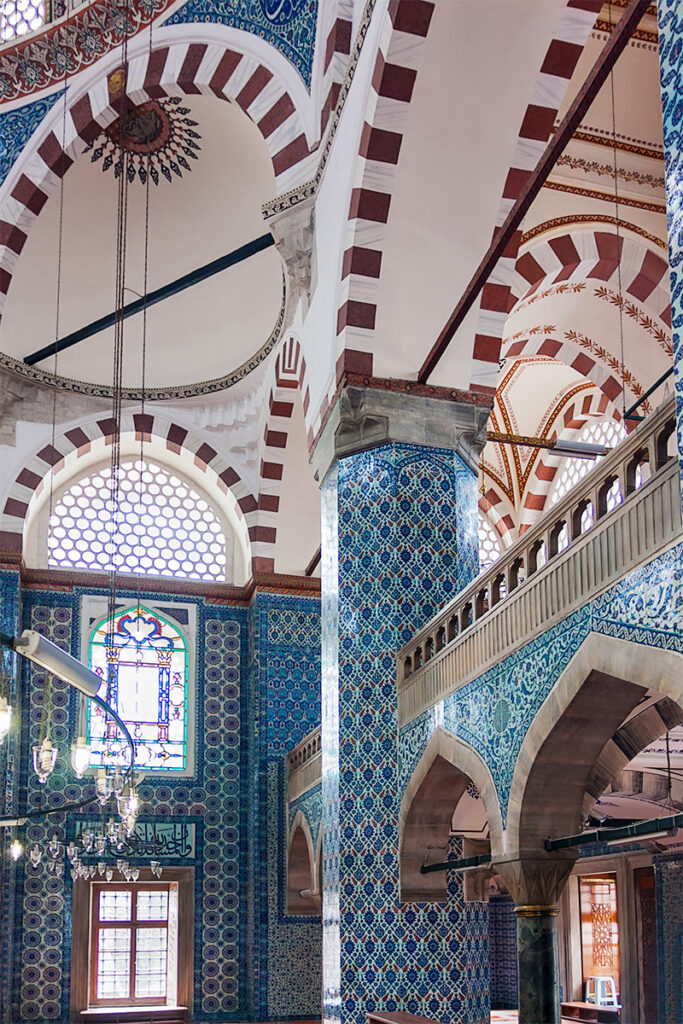
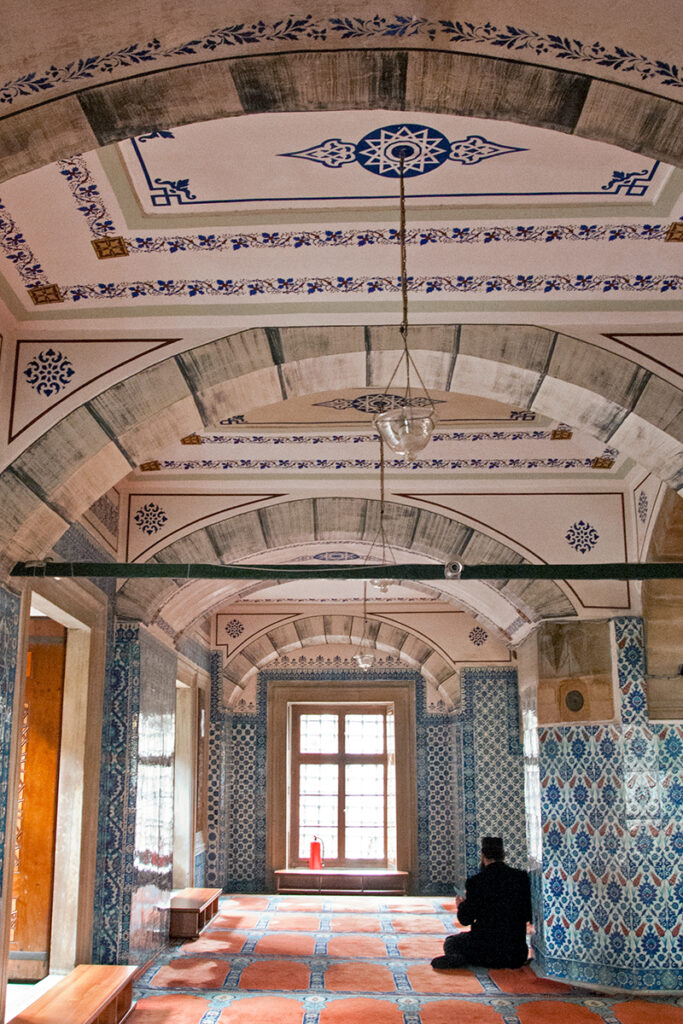
One of Istanbul’s most adorable mosques is Rustem Pasha mosque, near the spice market in Eminönü. The interior of the mosque is decorated with famous blue Iznik tiles combined in various intricate patterns.
The appeal of Rustem Pasha mosque comes from its very low-key atmosphere. Being smaller than other imperial mosques, it feels more intimate and more down to earth.
A fun way to enter Rüstem Pasha mosque is through a window cut in the stone wall next to the main entrance. It’s a tight squeeze, but on the other side, the window opens onto a stairwell that brings you to the front yard of the mosque. It feels very ‘middle ages’ climbing into a stone fortress through a small window.
Pierre Loti Hill
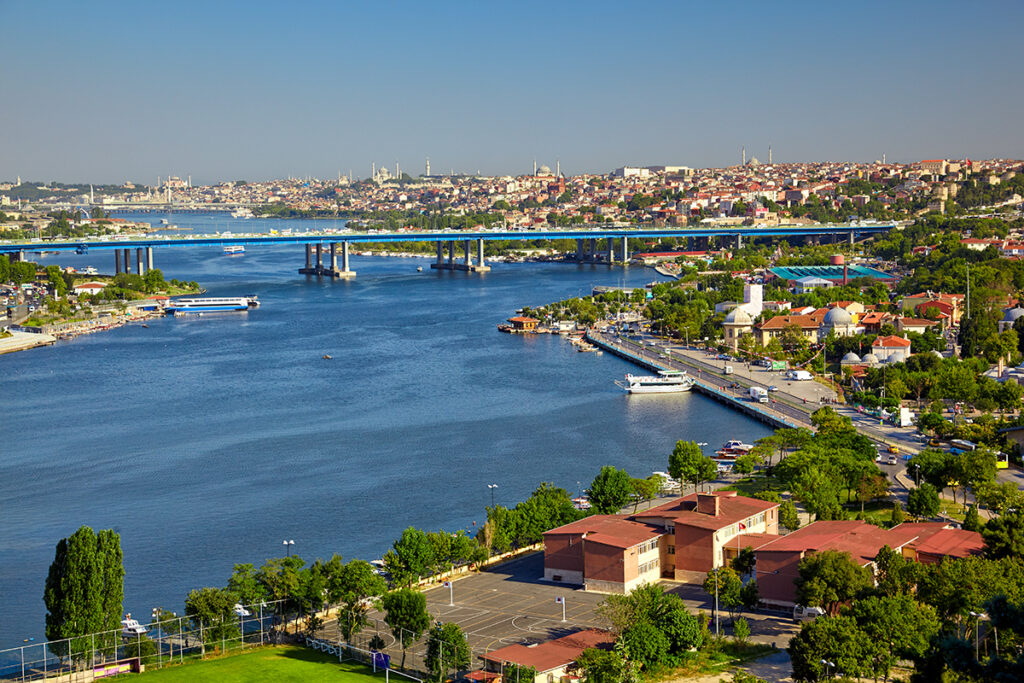
Another fantastic viewpoint is Pierre Loti Hill. It is located further from the centre, in the Eyup neighbourhood, but it can be easily reached by T4 tram from the wharf. And you don’t even have to climb the hill, you can catch the cable car to the top.
There is a cafe at the top, so you can refuel with delicious Turkish coffee and desserts while admiring the views. And if you are wondering why a hill in Istanbul has a French name, you can check out the small museum dedicated to the French author Pierre Loti, who was known to frequent the hill.
Buyuk Valide Han
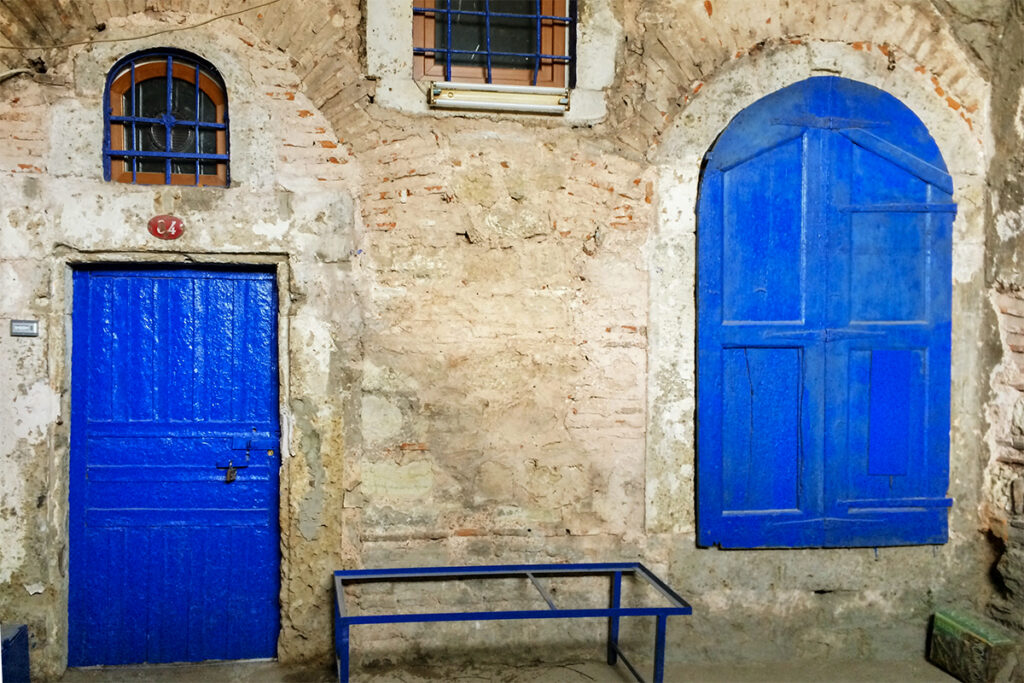
Buyuk Valide Han is the worst-kept secret in Istanbul. Located in the Eminonu neighbourhood among the maze of backstreets around the Grand Bazaar, the Buyuk was popular for some time because you could access its roof and see some photogenic views of Istanbul.
In all honesty, the view wasn’t that spectacular, it was mostly the aura of a ‘secret spot’ that made it so attractive. And because the streets around the Grand Bazaar are such a tangled mess, finding the Buyuk was a real quest.
The roof is no longer accessible, but there is a cafe on the second floor that has nice views of the city.
Yet even without the roof access, Buyuk Valide Hun is a cool spot to explore. It was built in the 16th century to store merchandise unloaded from the ships anchored on the Golden Horn and to provide living quarters for the travelling merchants.
Amazingly the structure is still in use by various craftsmen as workshop spaces and storage areas, and it has a super rustic appearance.
The Aqueduct of Valens
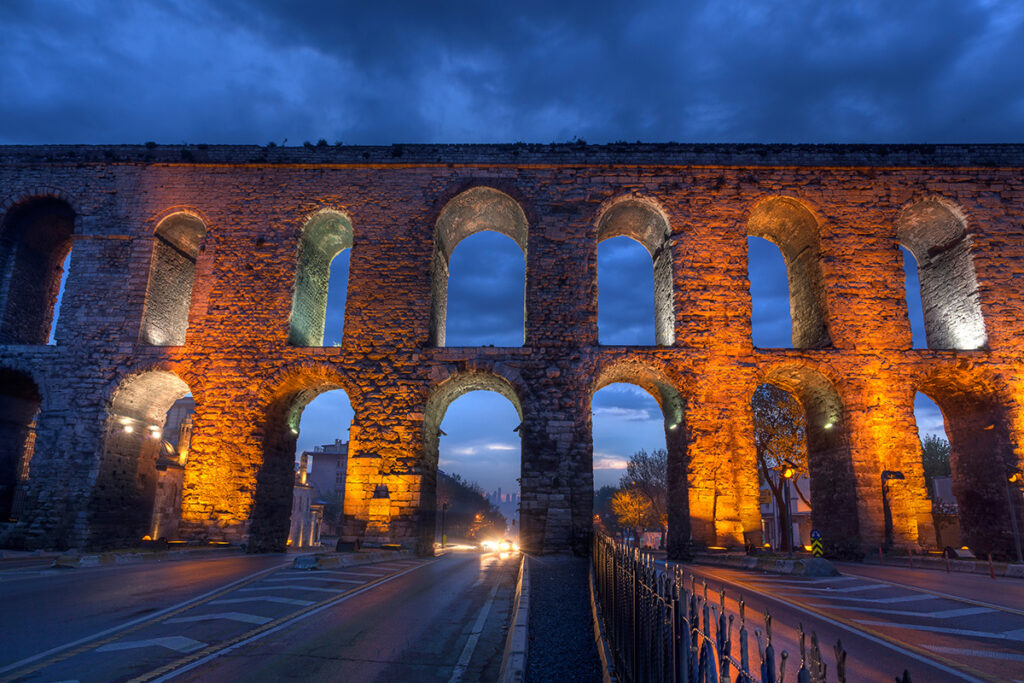
A 20-minute walk from the Grand Bazaar brings you to one of the most impressive Roman aqueducts that exist today. Double-arched, like Segovia Aqueduct, the Valens Aqueduct was commissioned by the Eastern Roman emperor Valens in the 4th century and took nearly 30 years to build.
The aqueduct brought water from the surrounding countryside to underground storage systems like Basilica and Theodosius cisterns. Like many ancient structures in Istanbul, Valens aqueduct had been assimilated into the modern cityscape. It towers over the Atatürk Bulvarı – a multi-lane road with heavy traffic.
Little Hagia Sofia
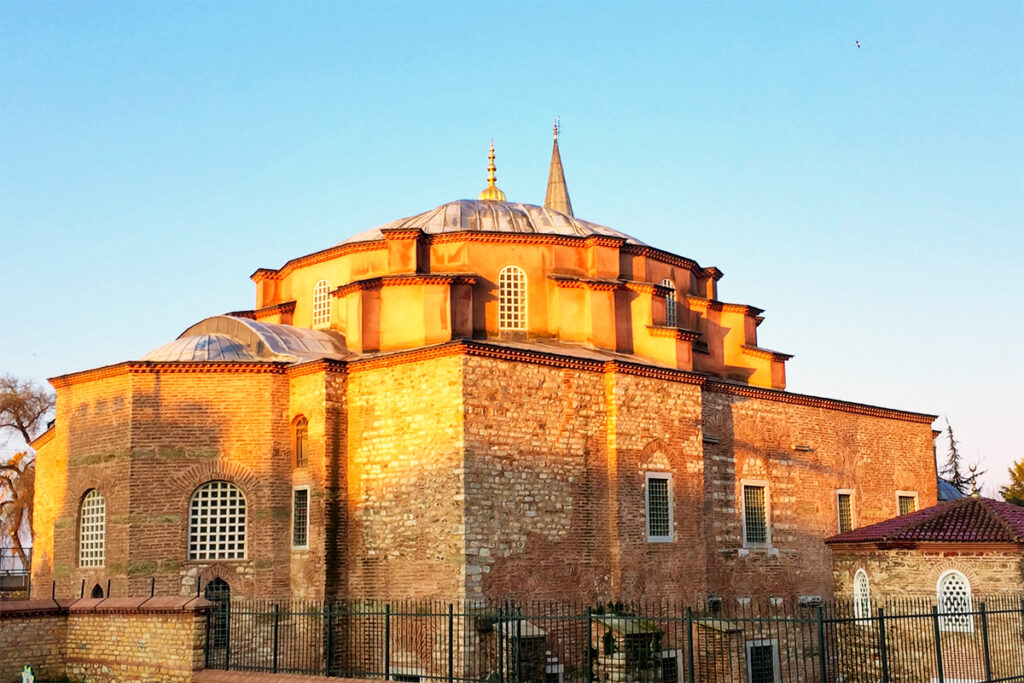
Around the corner from Abiuk Camii is a curious Byzantine church – Little Hagia Sofia. Built between 532 and 536, this church was dedicated to saints Sergius and Bacchus. Before they were recognized as saints, Sergius and Bacchus were Christian Roman soldiers who were tortured to death in 303. In the Roman and Byzantine empires, they were recognized as patron saints of all soldiers.
What’s unusual about this church is its irregular shape. The structure gives the impression that the architects could not decide what style to follow. Perhaps it was an early experiment with a domed structure prior to the construction of Hagia Sophia. Hence the name Little Hagia Sophia.
Roman Catholic Church of St. Mary Draperis
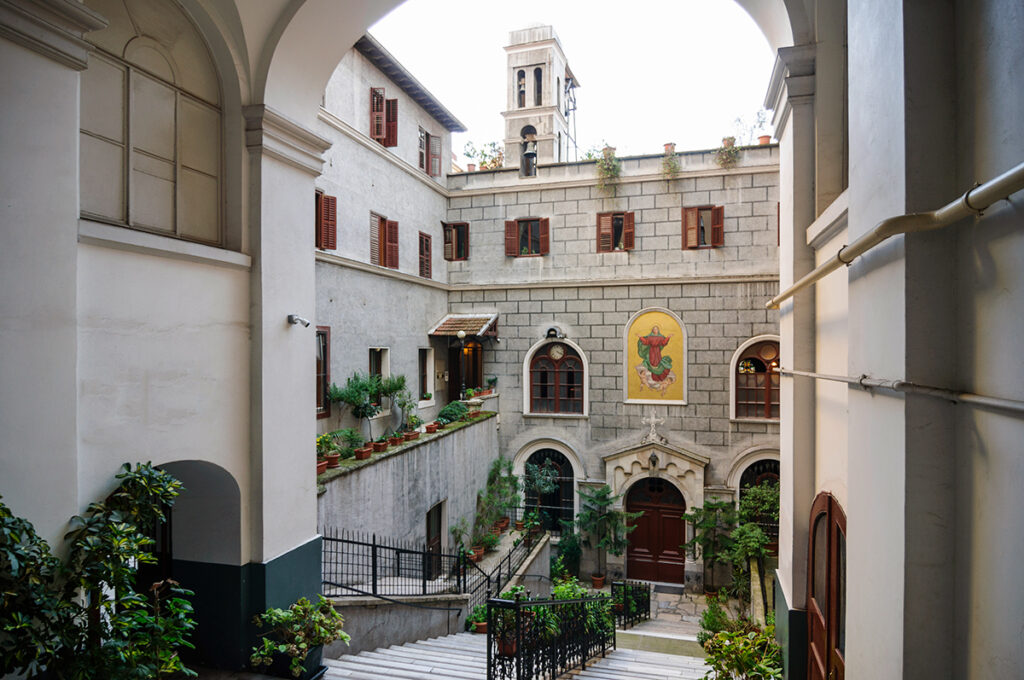
This is a hidden gem that hides in plain sight – along the buzzing Istiklal Caddesi. Church of St. Mary Draperis is a Franciscan church of Saint Francis of Assisi fame. Established in 1584, the church is one of the most ancient Roman Catholic churches in Istanbul.
The most remarkable thing about this church is that it still exists at all. After it was first established in 1453 in Sirkeci, it was destroyed by fire, rebuilt in Karakoy, burned again, then destroyed by an earthquake, and burned the third time a few years later. The current structure dates to 1769 when it was rebuilt for the fifth time.
Amazingly the icon of the Virgin had been saved from fire and other calamities each time the church was destroyed. As a Franciscan church, it serves Mass in Italian and Spanish every Sunday.
Yeralti Camii – Underground Mosque

Back in Karakoy, not far from Galata Bridge, hides one of Istanbul’s most unusual mosques. Unlike most of the city’s mosques that tower above the street level, this little gem is sunken into the ground. That’s right, Yeralti Camii is Istanbul’s Underground Mosque.
The legend has it that during the Byzantine times, a great fort stood in this place. The basement of the form housed the massive iron chain that protected the harbour from the invading armies. In times of trouble, the chain could be pulled up to create a physical barrier across the Golden Horn to stop the enemy ships. You can see the chain in Istanbul Archaeological Museum in the Topkapi Palace complex.
During Ottoman rule, the bodies of two Arab martyrs were discovered in the basement. According to another legend, these were Arab soldiers who died in the first Arab siege of Constantinople in the 7th century. Their graves were revealed to a Nakşibendi dervish in a dream in 1640. Consequently, Sultan Murat IV constructed a shrine on the site that you can still see today.
And there you have it. These Istanbul hidden gems and underrated sites give a unique perspective on Istanbul’s rich history, culture and architecture. If you have time, it is worth visiting these lesser-known sites to get a more complete understanding of the city.
More on Exploring Istanbul
- 11 Best Cafes in Istanbul to Experience the Centuries-Old Cafe Culture
- Guide to Vising Topkapi Palace & Harem: Sultans and Concubines
- How Many Days in Istanbul is Enough? Guide to Exploring the City
- 16 Charming Istanbul Hidden Gems and Underrated Sites
- 3 Umbrella Streets in Istanbul – Colorful Urban Sanctuaries
- Where to find Constantinople Today: On the Trail of Constantinople in Istanbul
- Finding Birds in Istanbul without Looking for Them

